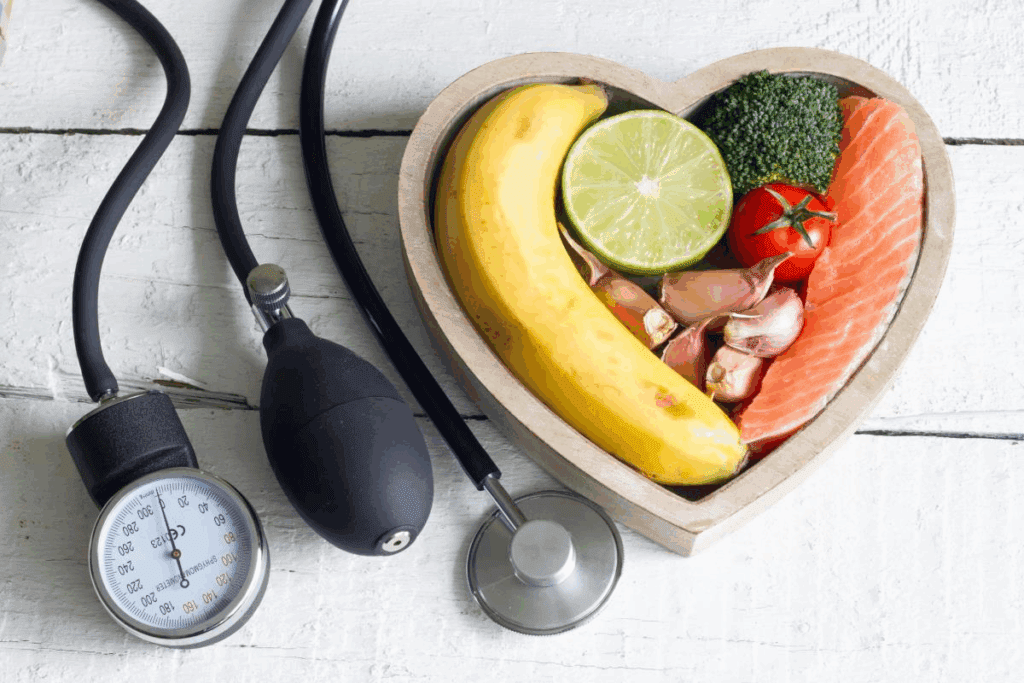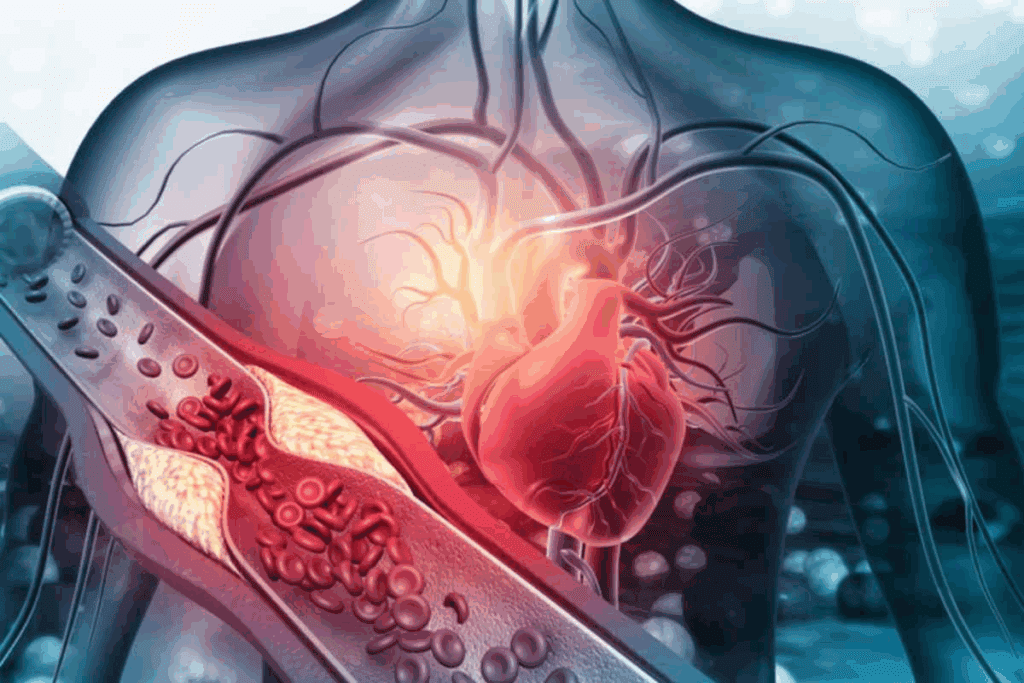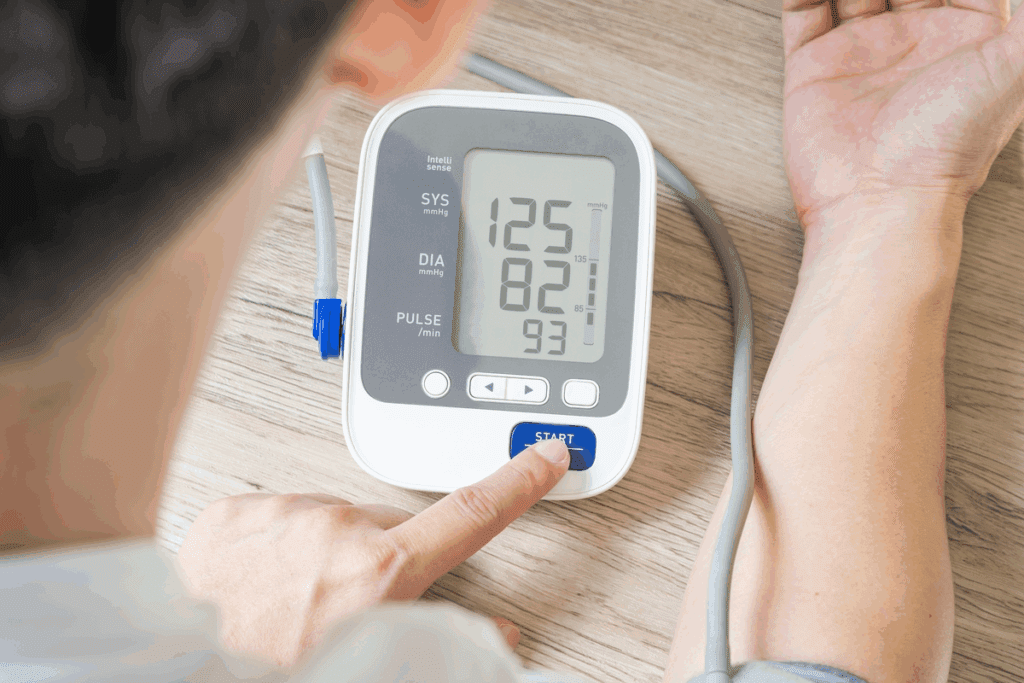
Feeling lightheaded or dizzy when you stand up? You’re not alone—millions experience the unsettling effects of low blood pressure. At Liv Hospital, we understand the importance of addressing hypotension. Discover how to raise low blood pressure naturally and safely at home.
According to Medical Expert, a heart rhythm specialist, simple actions like lying down can bring an immediate bump in blood pressure. “When you’re horizontal, your blood vessels don’t have to fight gravity as much as they do when you’re standing.” We will explore quick and safe ways to raise blood pressure at home, providing you with effective solutions to manage hypotension.

Hypotension, or low blood pressure, is a serious condition that needs attention. It happens when blood pressure drops below 90/60 mmHg. This can cause organs to not get enough blood, leading to symptoms like dizziness and fainting.
Hypotension means your blood pressure is too low. It can make it hard for vital organs to get the blood they need. This can happen suddenly or over time due to dehydration, medication side effects, or other health issues.
It’s important to know the difference between normal and low blood pressure. Normal blood pressure is between 90/60 mmHg and 120/80 mmHg. If it’s below 90/60 mmHg, it’s considered low. A sudden drop in blood pressure can cause symptoms right away, so it’s important to act fast.
There are several things that can increase your risk of getting hypotension. These include getting older, having conditions like diabetes or heart disease, and taking certain medications. Knowing these risk factors can help you manage and prevent low blood pressure.
To deal with low blood pressure, it’s key to know how to raise blood pressure temporarily and what raises blood pressure quickly. This knowledge can help ease symptoms and prevent more serious problems.

It’s important to know the signs of low blood pressure to stay healthy. Low blood pressure, or hypotension, can cause serious problems if not treated. It can lead to poor blood flow to important organs.
The signs of low blood pressure can differ but often include dizziness or lightheadedness and fainting or near-fainting. You might also see blurred vision. Some people feel nausea or vomiting, fatigue or weakness, and cold, clammy, or pale skin.
In severe cases, it can cause shock. This is a serious condition that needs quick medical help.
“Dizziness and lightheadedness are among the most common symptoms of low blood pressure, often resulting from inadequate blood flow to the brain.”
Medical Expert, Cardiologist
The severity of symptoms can vary a lot. Some people might only feel mild symptoms that don’t really affect their day. But others might have symptoms that make it hard to do everyday things.
The table below shows different levels of symptoms and what they might mean.
| Severity Level | Associated Symptoms |
| Mild | Dizziness, lightheadedness, mild fatigue |
| Moderate | Fainting, blurred vision, nausea |
| Severe | Shock, rapid heartbeat, confusion |
If symptoms get worse or don’t go away, you should see a doctor. Severe symptoms like chest pain, severe headache, or confusion need quick medical help. Also, if you have rapid or slow heartbeat, shortness of breath, or severe weakness, go to the emergency room right away.
Knowing the symptoms of low blood pressure and when to get help is key to managing it. By recognizing the signs and acting fast, you can reduce the risks of low blood pressure.
Low blood pressure can come from many sources. This includes medical conditions, certain medicines, and specific situations. Knowing what causes it is key to handling it well.
Several health issues can lead to low blood pressure. These include:
Some medicines can lower blood pressure as a side effect. These include:
| Medication Type | Common Use | Potential Effect on Blood Pressure |
| Alpha blockers | High blood pressure, prostate issues | Lower blood pressure |
| Beta blockers | Heart conditions, high blood pressure | Lower blood pressure |
| Diuretics | Fluid retention, high blood pressure | Can cause dehydration, lowering blood pressure |
Situations can also affect blood pressure. These include:
“Understanding the various causes of low blood pressure is key to managing it. By identifying the cause, people can take steps to manage their condition.”
— Medical Expert
By knowing what causes low blood pressure, people can take steps to manage it. This can improve their overall health.
Making quick dietary changes can help raise low blood pressure. It’s a simple way to manage hypotension. We’ll look at how to increase salt intake, eat specific foods, and drink certain beverages to boost blood pressure.
Adding more salt can raise blood pressure by holding water and expanding blood volume. But, it’s important to do this safely to avoid health problems. The American Heart Association suggests no more than 2,300 milligrams of sodium daily. Start by adding a bit of salt to meals or eating salty foods.
Some foods can raise blood pressure because they’re salty or have other properties. Here are a few:
Eating these foods can help increase blood pressure. But, it’s key to eat them in small amounts to avoid too much salt.
Some drinks can also raise blood pressure. These include:
Drinking these can temporarily increase blood pressure. But, watch the caffeine and sugar to avoid other health problems.
| Dietary Change | Effect on Blood Pressure |
| Increasing Salt Intake | Retains water, expands blood volume |
| Consuming Salty Foods | Provides immediate salt intake |
| Drinking Caffeinated Beverages | Temporarily raises blood pressure |
It’s important to understand how hydration affects blood pressure. Dehydration can lower blood volume, leading to low blood pressure. So, staying hydrated is key to managing hypotension.
Dehydration happens when we lose more fluids than we take in. This can reduce blood volume. As a result, the heart has to work harder, which can lower blood pressure.
Look out for dehydration signs like dark urine, dry mouth, fatigue, and dizziness. If you have these symptoms and low blood pressure, drinking more water can help.
The right amount of water varies by age, sex, weight, activity level, and climate. The “8×8 rule” suggests drinking eight 8-ounce glasses a day. But some say drink half an ounce of water per pound of body weight.
| Activity Level | Recommended Daily Water Intake |
| Sedentary | 8 cups (64 ounces) |
| Moderately Active | 10 cups (80 ounces) |
| Very Active | 12 cups (96 ounces) or more |
In emergencies, drinking water quickly can help restore blood volume and stabilize blood pressure. Drink fluids slowly to avoid stomach upset and allow for better absorption.
For quick rehydration, try these methods:
Physical interventions can quickly raise low blood pressure and ease symptoms. They are great for emergencies or when you can’t get to a doctor right away.
Compression stockings are a simple yet effective tool for improving circulation and raising blood pressure. They apply gentle pressure to the legs. This helps push blood upwards towards the heart, countering gravity and improving circulation.
“Compression stockings are a valuable asset for individuals with hypotension, as they help reduce blood pooling in the legs.” They are very helpful for people who often have low blood pressure.
Certain body positions can quickly raise blood pressure. For example, crossing your legs while standing or sitting can increase peripheral resistance and improve blood pressure. Also, lying down with your legs elevated can improve blood flow to the upper body.
Light physical activity can also help regulate blood pressure. Gentle exercises like walking or stretching can improve circulation without straining the body. It’s important to avoid vigorous exercise, as it can sometimes worsen hypotension.
“Regular, gentle exercise can help improve overall cardiovascular health and reduce the risk of blood pressure fluctuations.”
Examples of suitable exercises include:
Meal planning is a smart way to keep blood pressure stable and improve health. By choosing what and when we eat wisely, we can avoid sudden blood pressure drops. This helps keep our blood pressure steady all day.
Eating smaller meals more often is a good strategy for blood pressure control. It stops big drops in blood pressure that can happen after big meals. Eating smaller meals keeps our blood pressure more even.
Instead of three big meals, try five or six smaller ones. This helps avoid big drops in blood pressure. It’s great for people who get low blood pressure after eating.
When we eat can also affect our blood pressure. Eating at set times helps keep blood pressure stable. Skipping meals can cause low blood sugar and low blood pressure.
A study in the Journal of the American College of Cardiology found that eating smaller meals often can lower the risk of low blood pressure after eating in older adults.
“Eating patterns that include smaller, more frequent meals may be beneficial in reducing the risk of postprandial hypotension.”
Having quick snacks ready can save us in emergencies. Snacks high in salt and carbs can quickly raise blood pressure. Some good options include:
Drinking water or other hydrating drinks can also help raise blood pressure. For a quicker effect, try a salty drink or something salty to eat.
| Snack Type | Examples | Benefits |
| Salty Snacks | Crackers, pretzels, salted nuts | Quickly raises blood pressure |
| Carbohydrate-rich Snacks | Dried fruit, energy bars, granola | Provides a rapid source of energy |
| Hydrating Beverages | Water, electrolyte-rich drinks | Improves blood volume |
By using these meal planning tips, we can better manage our blood pressure. It’s wise to talk to a healthcare professional to create a plan that fits our needs.
To manage low blood pressure, adopting a holistic approach is key. This includes making lifestyle changes. These changes can help stabilize your blood pressure and improve your health.
Getting enough sleep and rest is vital for healthy blood pressure. Poor sleep quality and duration can affect blood pressure regulation.
Research shows adults need 7-9 hours of sleep per night for optimal health. Getting enough rest can prevent low blood pressure episodes.
Stress can significantly impact blood pressure. Using effective stress management techniques can help mitigate this effect.
“Stress management is key for maintaining healthy blood pressure. Techniques like meditation and deep breathing are highly effective.”
Medical Expert, Cardiologist
| Stress Management Technique | Description | Benefits |
| Mindfulness Meditation | Focusing on the present moment to reduce stress | Reduces anxiety, improves mental clarity |
| Deep Breathing Exercises | Slow, deliberate breathing to calm the body | Lowers blood pressure, reduces stress |
| Physical Activity | Regular exercise to improve cardiovascular health | Improves heart health, reduces stress |
Regularly monitoring blood pressure at home is important. It provides valuable insights into your condition. This helps you make informed decisions about your health.
When choosing a blood pressure monitor, consider the following:
By incorporating these lifestyle adjustments into your daily routine, you can better manage your blood pressure. This improves your overall health.
Managing low blood pressure needs a mix of quick actions and lasting lifestyle changes. We’ve looked at ways to quickly raise blood pressure, like changing what we eat, staying hydrated, and using physical methods.
To quickly raise blood pressure, we found that eating more salt, drinking certain drinks, and wearing compression stockings help. But, it’s key to pair these quick fixes with long-term plans.
For lasting management, we need to make lasting lifestyle changes. This includes changing our eating habits, handling stress, and keeping an eye on our blood pressure. By doing these things, we can lessen how often and how bad low blood pressure gets.
To raise blood pressure quickly, we need to use these quick fixes and keep an eye on our health. It’s about finding the right balance between quick relief and long-term care.
Knowing how to raise blood pressure involves using these strategies and talking to doctors to fit plans to our needs. By mixing quick fixes with long-term care, we can handle low blood pressure better and feel better overall.
Low blood pressure, or hypotension, is when your blood pressure is below 90/60 mmHg. But, it’s important to look at your overall health too. This helps figure out if your blood pressure is too low.
To quickly raise your blood pressure, try eating more salt or drinking water. Wearing compression stockings or drinking coffee can also help. Always talk to a doctor for advice that fits you.
Foods with a lot of salt, like pickles or salted nuts, can help. Also, eating foods with vitamin B12, like meat or fish, might be good. Always talk to a doctor before changing your diet.
Drinking enough water is key because dehydration can lower blood pressure. Try to drink at least eight glasses a day. Adjust based on how active you are and your body’s needs.
Yes, some medicines, like diuretics or beta-blockers, can lower blood pressure. If you have low blood pressure, talk to your doctor about your medicines.
Yes, getting enough sleep and managing stress can help. Try meditation or deep breathing. Also, drink plenty of water and eat well.
If you feel dizzy, faint, or have trouble breathing, get help right away. Also, see a doctor if your low blood pressure doesn’t go away or is very bad.
Yes, compression stockings can improve blood flow and raise blood pressure. They help prevent blood from pooling in your legs. But, talk to a doctor to see if they’re right for you.
Eating small meals often and avoiding long periods of standing can help. Staying hydrated is also key. Talk to a doctor about what works best for you.
Snacks with a lot of salt, like pretzels, or caffeinated drinks can quickly raise blood pressure. But, eat them in small amounts and talk to a doctor first.
World Health Organization. (2025). How to Raise Low Blood Pressure Fast Quick. Retrieved from https://www.who.int/news-room/q-and-a/detail/blood-pressure>
Subscribe to our e-newsletter to stay informed about the latest innovations in the world of health and exclusive offers!
WhatsApp us